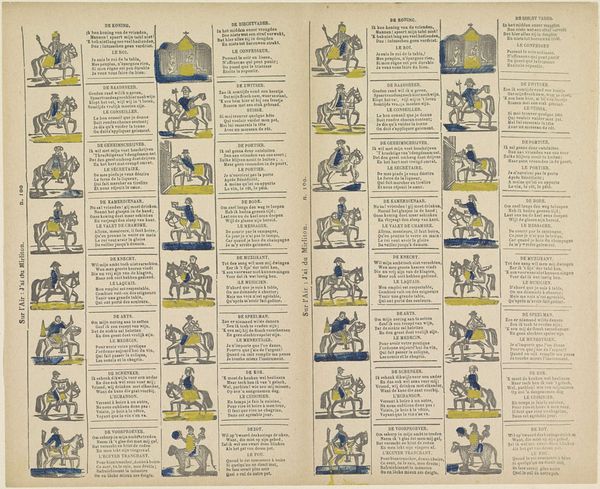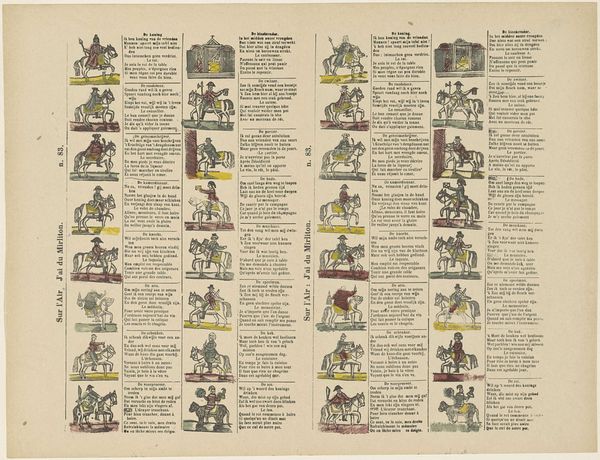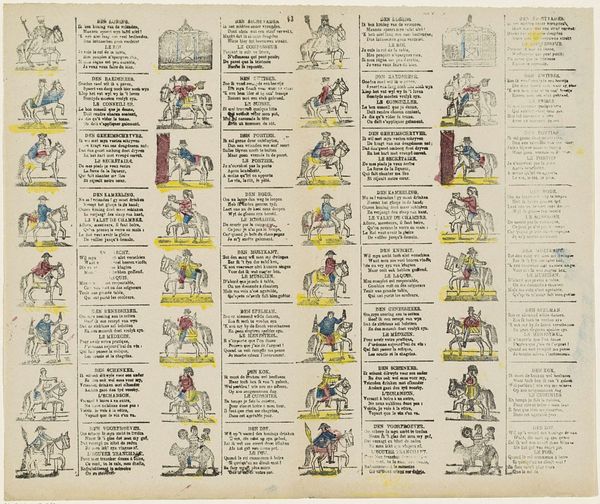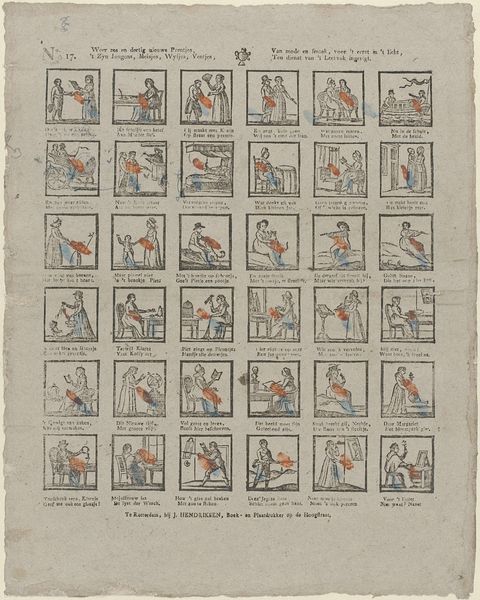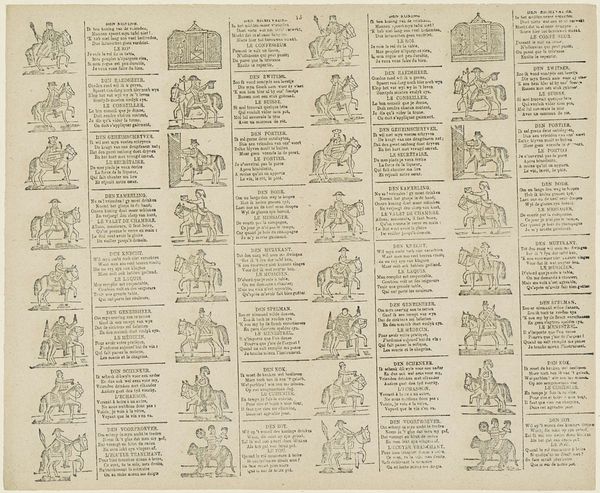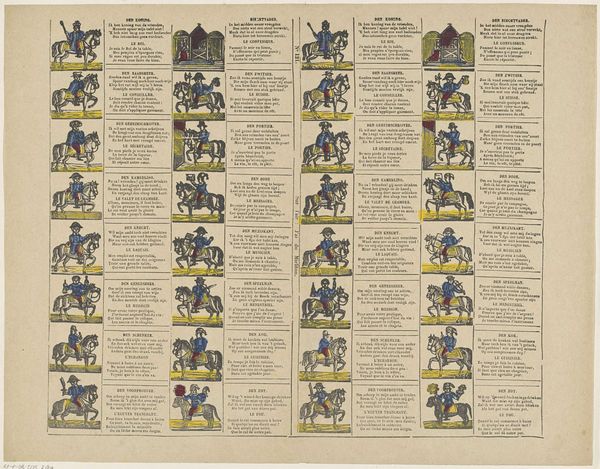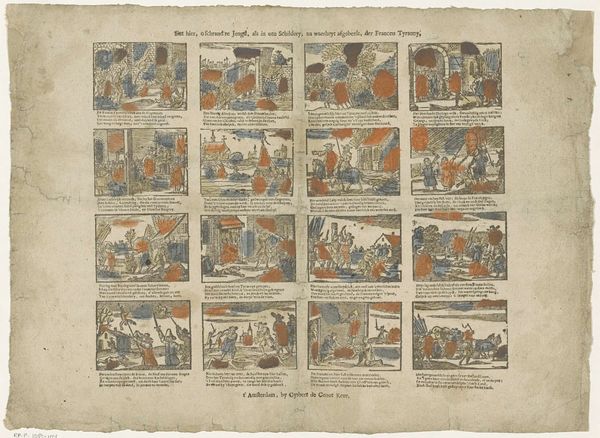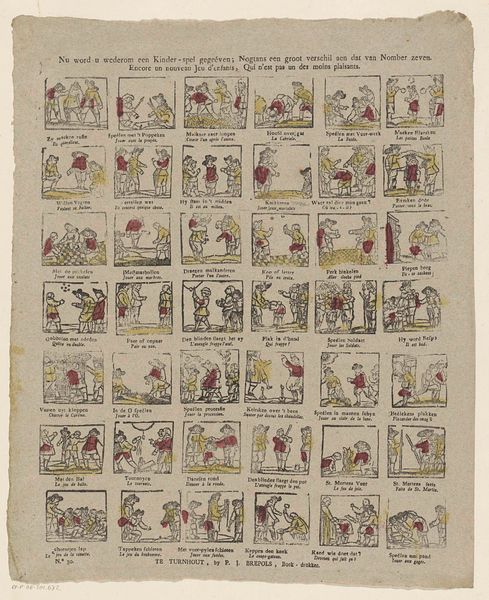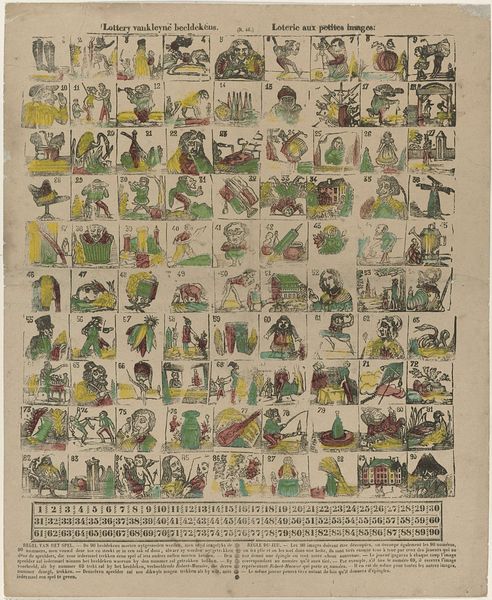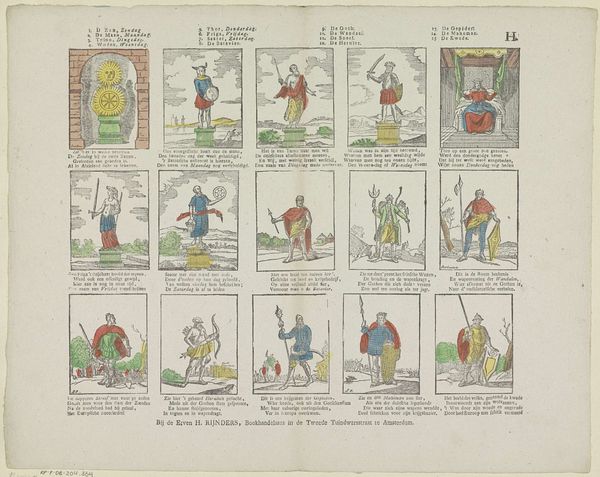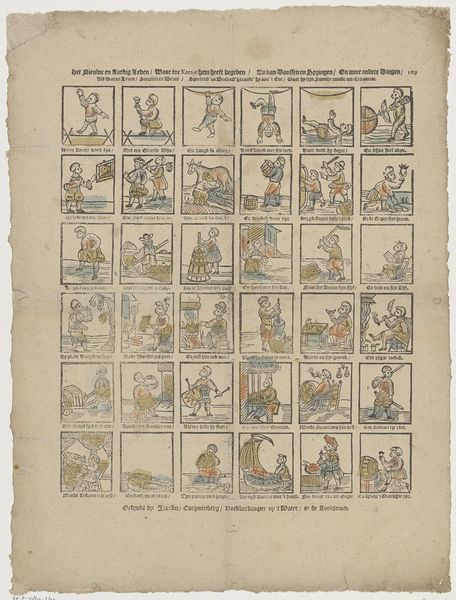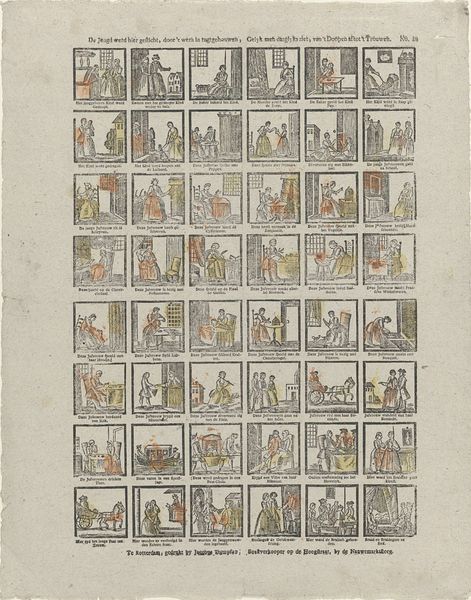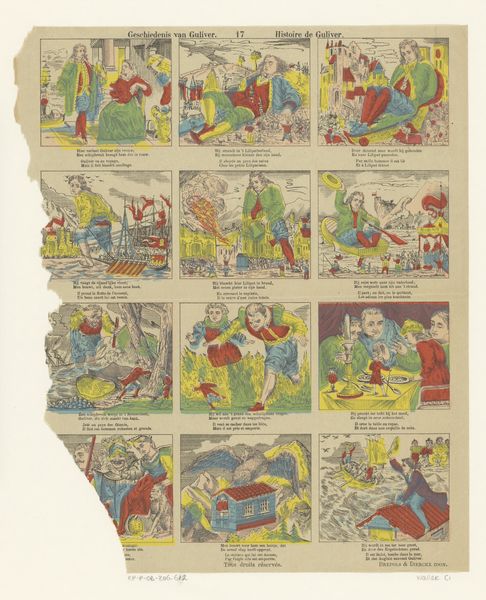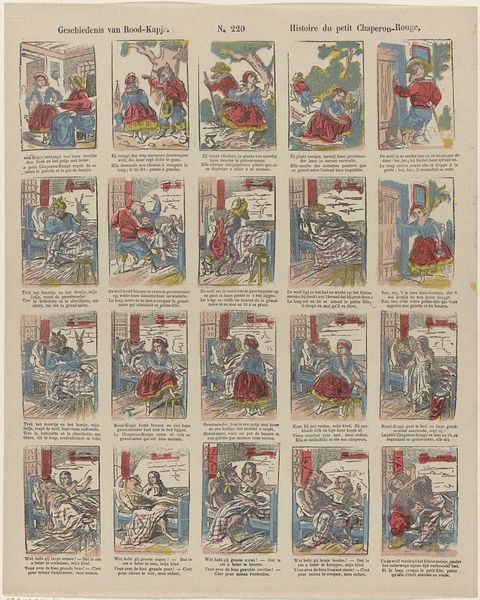
graphic-art, print, engraving
#
graphic-art
#
narrative-art
# print
#
traditional media
#
genre-painting
#
engraving
#
miniature
Dimensions: height 330 mm, width 387 mm
Copyright: Rijks Museum: Open Domain
Curator: This artwork, entitled “Driekoningenbriefjes,” spanning from 1833 to 1911, is a fascinating example of printmaking now held at the Rijksmuseum. The firm Brepols & Dierckx zoon produced this engraving, a beautiful example of narrative miniature art. Editor: My immediate reaction is one of intrigued amusement. It has the aesthetic charm of a board game from another century—a pastel palette, orderly grid, and characters that look as though they were created with playful yet defined intention. Curator: Indeed! "Driekoningenbriefjes," or Three Kings' Day slips, acted as part of a festive tradition in which verses and roles were assigned during Epiphany celebrations, deeply entrenched in social rituals and hierarchies of the time. The tradition used role play for merriment, also mirroring power structures in society. Editor: How fascinating! Thinking about it intersectionally, this work becomes a window into not just a game, but the societal structure embedded in that era. We see representation of ‘the king,’ ‘the advisor,’ and other ranked characters, each dictating social interaction in a festive, albeit subtly regimented, setting. This highlights power dynamics normalized within these celebrations, prompting me to think about who was invited to the party and what such distinctions meant. Curator: Precisely. The medium also matters, a print available on paper implies a level of dissemination—suggesting widespread engagement within a particular class and social group. Think about it within the socio-economic conditions. The accessibility points to the values promoted and propagated through this type of visual and textual engagement. Editor: And if we read it against the grain, perhaps we see the seeds of playful resistance or commentary on those very hierarchies? By democratizing roles, even superficially, within a domestic game, what kind of potential shift could this represent? Was it a way of testing roles in performance that were impossible in reality, making for some potentially liberating aspects for marginalized individuals? Curator: That’s a keen insight. While the explicit intent might appear aligned with dominant societal norms, artworks like this become fascinating cultural battlegrounds. The politics of imagery here reveals an era's attempt to structure society playfully and to instill prescribed identities, ones that we, as modern viewers, can deconstruct to see their complicated underpinnings. Editor: Examining this today through theory reminds us that seemingly benign amusements often harbor layers of power and social regulation. Recognizing these embedded forces helps reveal both what has shifted and what regrettably persists within modern interactions.
Comments
No comments
Be the first to comment and join the conversation on the ultimate creative platform.
